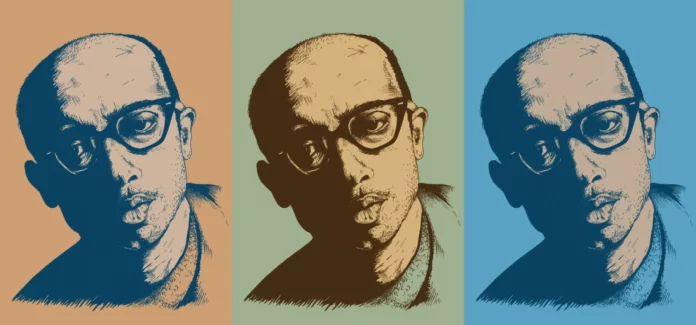Stanley Brouwn: The Measure of a Journey
In the realm of conceptual art, where ideas often reign over tangible creations, Dutch artist Stanley Brouwn, born in Suriname and based in Amsterdam since 1957, carved a unique path for himself by focusing on the seemingly mundane act of walking. His work, spanning several decades, invites viewers to reconsider the very essence of distance, measurement and the experience of traversing space.
Brouwn’s artistic journey began in the 1960s, a time of artistic experimentation and questioning of traditional art forms. He embarked on walks, meticulously documenting his steps and the distances traveled. These walks, at first limited to his local environment, gradually expanded to encompass journeys across continents.
What distinguishes Brouwn’s work is his unwavering commitment to accuracy and his rejection of conventional artistic representations. His documentation often took the form of simple typed notes detailing the number of steps taken, the time elapsed, and sometimes even the type of footwear used. These unadorned records, devoid of any embellishment or artistic interpretation, serve as stark reminders of the physical act of movement and the passage of time.
Brouwn’s work challenges our perception of distance, prompting us to question the arbitrary nature of standardized measurements. His focus on the individual experience of space, rather than on objective cartographic representations, highlights the subjective and embodied nature of navigating the world.
His pieces, such as “This Way Brouwn” (1960-1964), in which he asked passersby for directions and then followed them, literally embody the concept of a journey guided by chance encounters and subjective perspectives. In another work, “1 Meter” (1969), Brouwn marked a distance of one meter on a wall, blurring the line between art and the everyday environment. He even went so far as to claim every shoe store in Amsterdam as a work of art, demonstrating his radical conceptual approach.
Brouwn, recognized as the best-known representative of Dutch conceptual art, always prioritized the underlying idea of his works over their formally austere aesthetics. Self-taught, he initially leaned, like the artists of the Zero movement, toward monochrome geometric abstraction. But Brouwn soon transcended the specific aesthetic of Zero. Beginning in 1960, he constructed a particularly personal and consistent body of work, in which he investigated the interplay between movement and distance. Using his body as the measure of all things, he formulated his own unique system of measurement (the sb-foot, the sb-elbow and the sb-step). From this scale, the artist investigated the field of tension between the subjective experience of distance and the objective recording of it.
Brouwn’s artistic legacy lies not in large installations or visually stunning creations, but in his ability to elevate the simple act of walking into the realm of conceptual art. His work serves as a quiet invitation to pay attention to the subtle details of our movements, the passage of time, and the unique experience of traversing space.
While Brouwn’s art may seem deceptively simple, it opens up a world of philosophical and conceptual inquiry. It challenges us to reconsider our relationship to the physical world, to question the boundaries between art and life, and to appreciate the beauty and complexity of the everyday.
In a world saturated with visual stimuli and grand artistic gestures, Stanley Brouwn’s work stands as a testament to the power of simplicity, precision, and the enduring charm of the journey itself.




